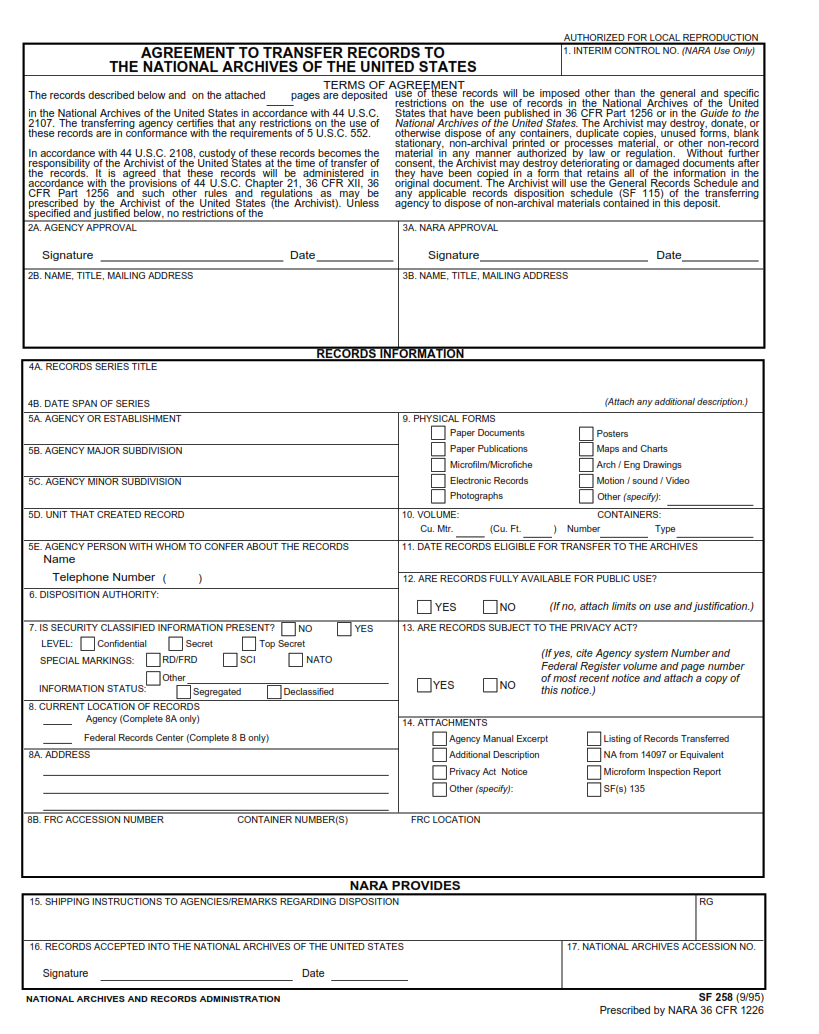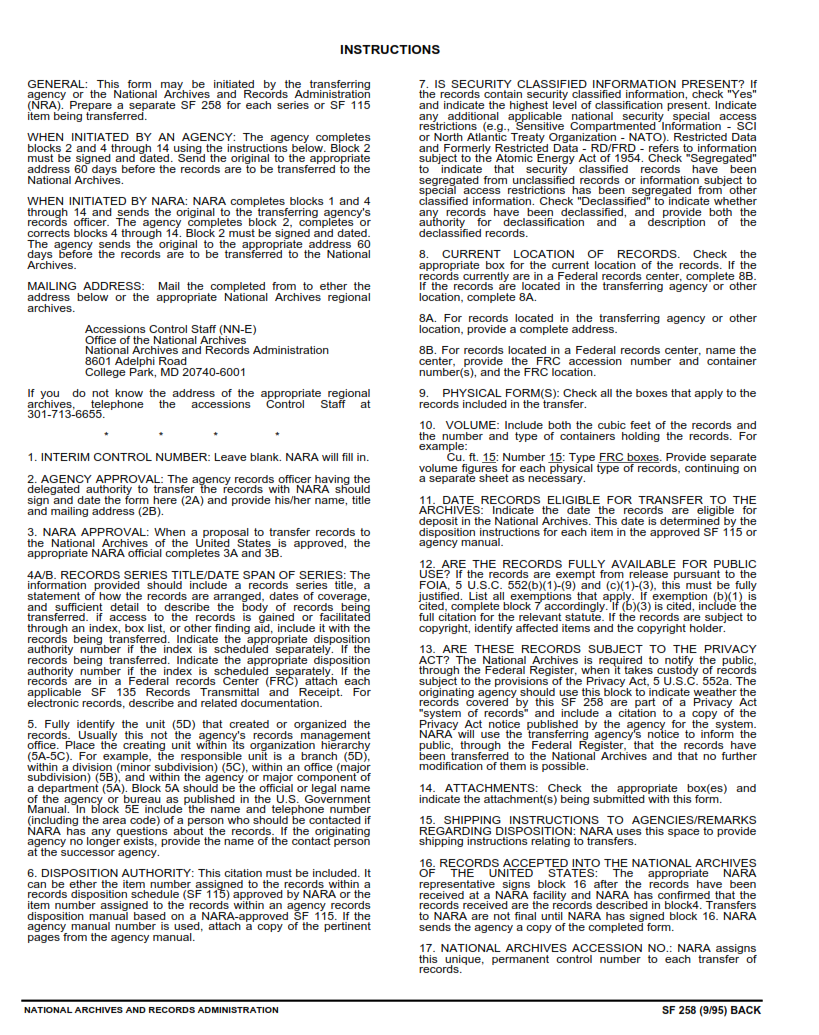SFFORMS.COM – SF 258 Form – Agreement to Transfer Records to the National Archives of the United States – The National Archives and Records Administration (NARA) is a federal agency that collects and preserves the documentary heritage of the United States. To ensure the long-term preservation of federal records, the National Archives has developed SF 258, an agreement to transfer records to NARA. The SF 258 form is used by government agencies to agree to transfer records to NARA. Agreements to transfer records can be complex and require careful coordination between the agency transferring the records and NARA.
Download SF 258 Form – Agreement to Transfer Records to the National Archives of the United States
| Form Number | SF 258 Form |
| Form Title | Agreement to Transfer Records to the National Archives of the United States |
| File Size | 317 KB |
| Date | 09/1995 |
What is an SF 258 Form?
The SF 258 form is a document that authorizes the transfer of records to the National Archives of the United States. This form can be used by any agency, organization or individual who wishes to transfer their records to the National Archives for preservation and storage purposes. The form must be completed in its entirety, including all necessary information such as name, address, and contact details.
The SF 258 form is an important tool for record-keeping because it ensures that valuable documents are preserved for future generations. It also helps to maintain accurate historical records and provide researchers with access to important documents that may not be available elsewhere. The National Archives of the United States is responsible for maintaining a vast collection of historical documents, including letters, photographs, maps and other materials that shed light on American history and culture.
Overall, completing an SF 258 form can help ensure that your organization’s or personal records are properly preserved for future generations to study and learn from. By transferring your records to the National Archives of the United States, you can help ensure that they will be available for scholars, researchers and historians to use in perpetuity.
What is the Purpose of the SF 258 Form?
The SF 258 Form is an essential document used to transfer records from federal agencies to the National Archives of the United States. The form serves as an agreement between the agency and the archives that outlines the documents being transferred, their arrangement, and any conditions or restrictions associated with access to them.
The purpose of this form is to ensure that all relevant records are properly preserved and made available for future research or historical purposes. It also helps maintain accountability for federal agencies by providing a clear chain of custody for their documents.
Overall, completing an SF 258 Form is critical for maintaining transparency and ensuring that important government records remain accessible for generations to come. Without this process, valuable information may be lost or inaccessible, preventing historians and researchers from gaining insight into our nation’s past.
Where Can I Find an SF 258 Form?
The SF 258 form is an important document required by the National Archives of the United States to transfer records from one agency to another. This form is often used when an agency has determined that their records are no longer needed and can be transferred to a central location for archiving. There are several places where you can find an SF 258 form, including on the National Archives website or through your specific government agency.
If you’re unable to locate a copy of the SF 258 form on your own, it’s best to reach out to your agency’s records management officer or contact the National Archives directly for assistance. They may also be able to provide additional guidance on completing and submitting the form correctly, as well as any other requirements or documentation needed for record transfer.
Overall, finding an SF 258 form may require some research and communication with various entities, but it’s a crucial step in ensuring proper management and preservation of important government records.
SF 258 Form – Agreement to Transfer Records to the National Archives of the United States
The SF 258 Form is a legal document that serves as an Agreement to Transfer Records to the National Archives of the United States. This form is used by federal agencies when transferring records that are no longer needed for their current operations but have permanent historical or research value. The National Archives of the United States Act of 1934 established the agency as a national repository for records and documents of historical significance.
The SF 258 Form is required for all transfers of records to the National Archives, including electronic records, maps, photographs, and audio-visual materials. It provides important information about the records being transferred, such as originator agency, record series title and number, inclusive dates, and volume or linear feet. Additionally, it includes certification language that attests to the completeness and authenticity of the records being transferred.
It’s important to note that not all federal records are eligible for transfer to the National Archives. Agencies must follow specific guidelines outlined by the National Archives and Records Administration (NARA) in determining which records have permanent historical or research value. Once transferred to NARA custody through the completion of an SF 258 Form process, these valuable and historically significant documents become accessible to researchers both inside and outside government circles.
SF 258 Form Example

